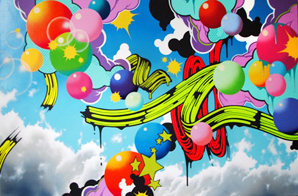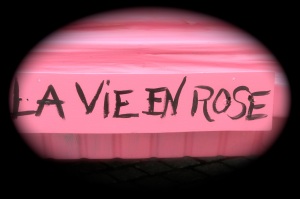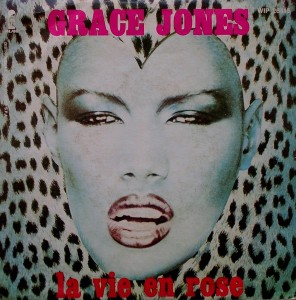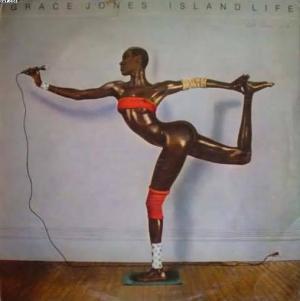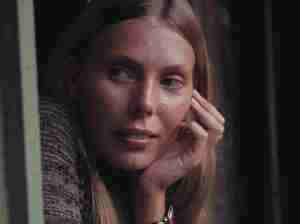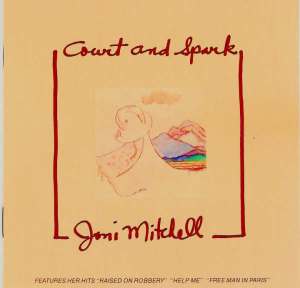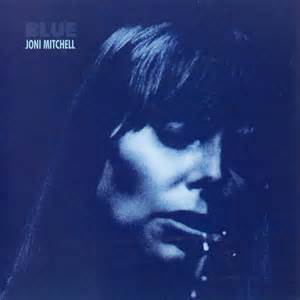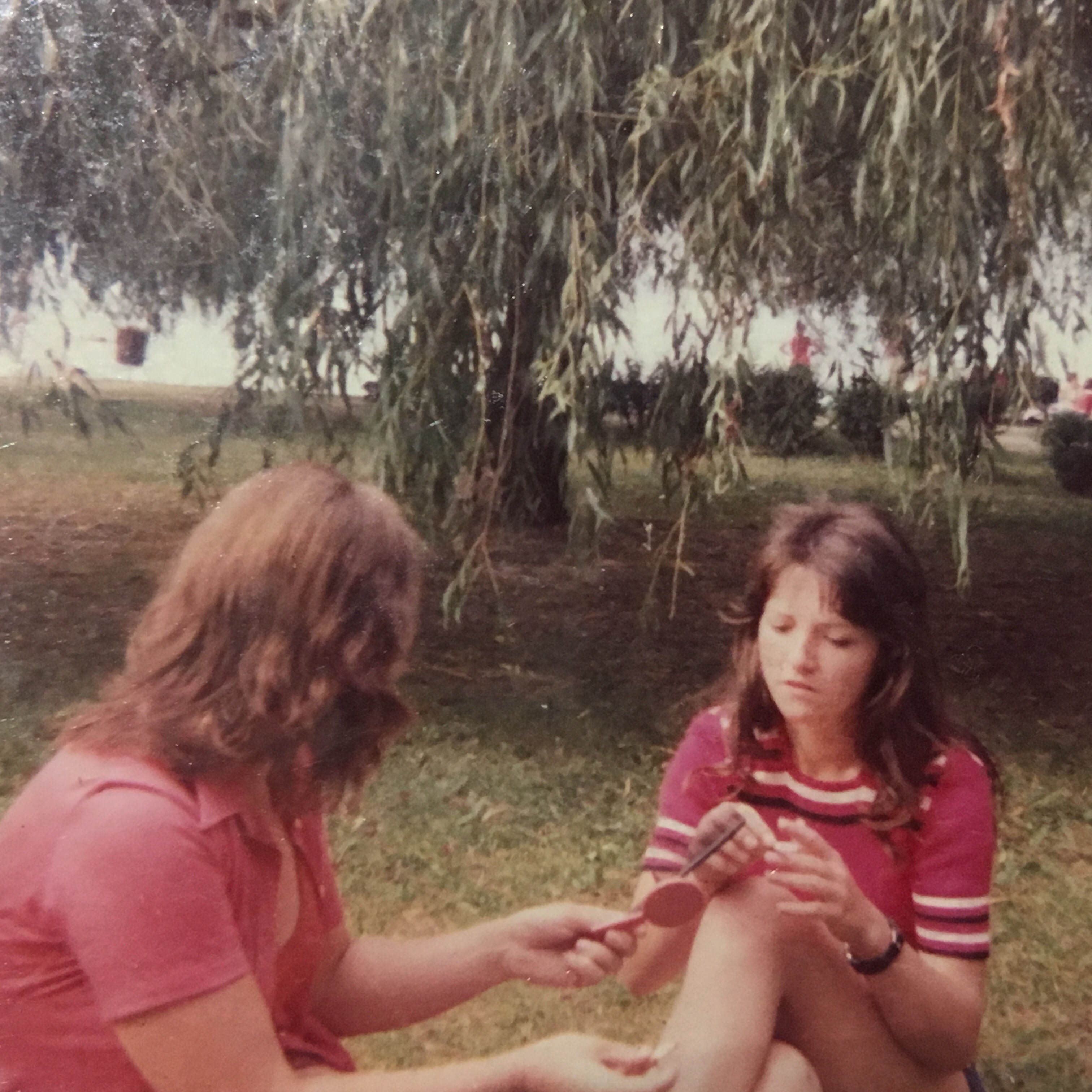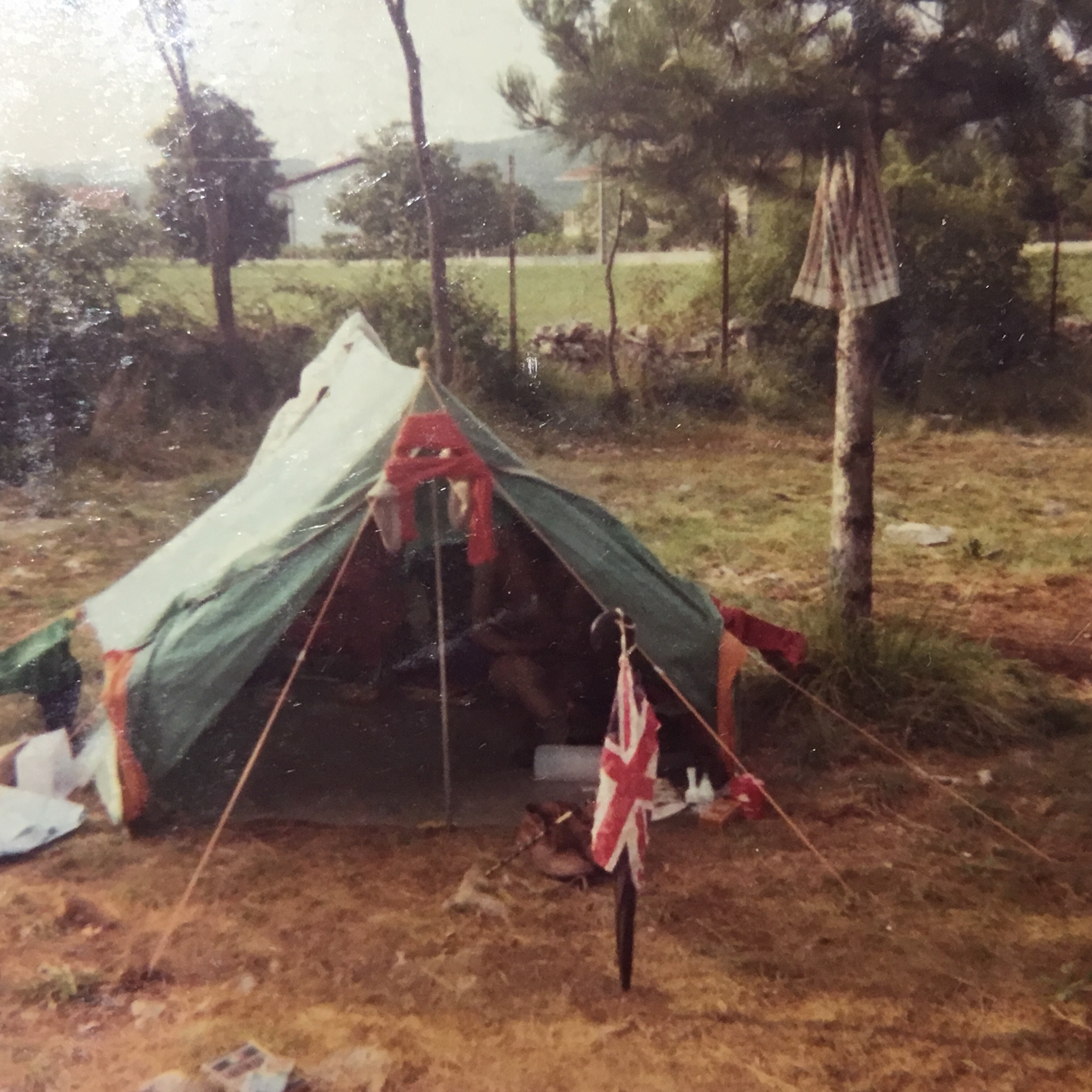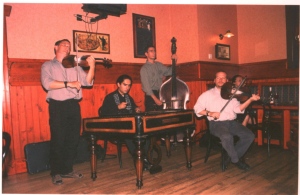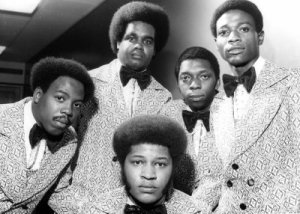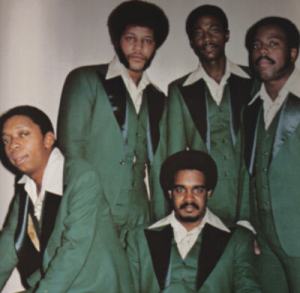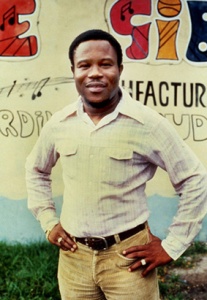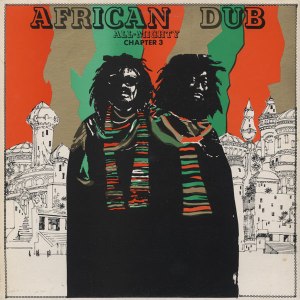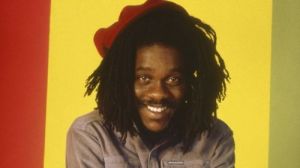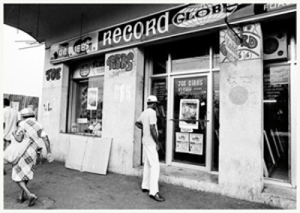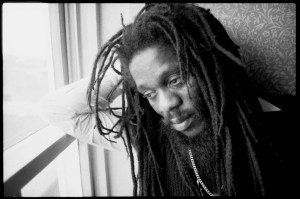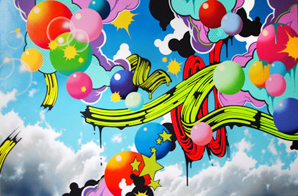
Then Came The Last Days Of May – Blue Öyster Cult
They’re OK, the last days of May, but I’ll be breathing dry air
I’m leaving soon, the others are already there
You wouldn’t be interested in coming along ? Instead of staying here…
It’s said the west is nice this time of year, it’s what they say…

One of the towering theme songs of my adolescence, Blue Öyster Cult‘s Then Came The Last Days Of May seems an appropriate choice on May 31 2015 as I write this blog at 5.00am. Evocative, stirring, tragic and beautiful, it is the last track on BÖC’s first self-titled LP. I carried this LP around the competitive corridors of the Lower Sixth when taste began to carve out the cliques. New kid Andy Shand had introduced Andy Holmes (“Sherlock“) to the Cult as he was a Seaford clan member, taking the train into Lewes for school. Andy Shand was also the bass player in Rough Justice, the band I had joined who rehearsed at Waterlilies, Conrad Ryle‘s place in Kingston. I’ll save the mighty Rough Justice for another post, but suffice it to say that Andy Shand (he never did have a nickname) and I were so enamoured of this LP that we included a section of “Before The Kiss, A Redcap” (at 1.39 it’s a bass riff naturally enough) in a Rough Justice song that had a nice indulgent instrumental middle section (and also featured the riff from You Really Got Me), which I think guitarist Andrew Taylor (Tat – ) had suggested, with Conrad’s approval.

We all walked around school with little badges on, the cross and hook symbol that the band used on all their LPs – there were 3 LPs out already in 1974 – in Greek mythology the sign of Kronus, King of Titan and Father of Zeus – and furthermore, symbol of the chemical element for lead, the heaviest of metals. For Blue Öyster Cult were a very streamlined and polished heavy metal band, one of the first. They were the first band to use an umlaut (ö) over one of the letters in their name (Motörhead, Queensrÿche, Mötley Crüe would follow) – and as any German speaker or Arsenal fan would know, an umlaut changes an Oh into an Er. Özil – the German international World Cup winner who currently plays for the Arsenal and won the FA Cup yesterday v Aston Villa – is pronounced Erzil. But at school we never went around saying Blue Erster Cult. Sounds stupid right? Manager Sandy Pearlman came up with the name, thought it conjured up Wagner. What it all meant was that we thought we were the grooviest kids in the school, despite mountains of evidence to the contrary. We were pretentious self-congratulatory twerps. But the band was undoubtedly great, and many many years later, the records still hold up, brimming with crisp riff-laden shiny metallic rock craftsmanship. Really metal is not my thing – nor is rock – I never took a shine to Deep Purple (except for the incredible Fireball) or Black Sabbath, and the bluesey side of guitar rock never grabbed me much either (Stones, Zepp, Free etc). I was a pop tart awaiting my conversion to soul and dub reggae. And hip hop. But these days I can listen to anything and find joy in it – classical, country, metal, folk, electro-pop, balkan gypsy, trad jazz, disco, soukous, mbaquanga, samba, salsa, son. Bring me your music !

This song is tragically a true story. Then Came The Last Days Of May was written by lead guitarist Donald Roeser – known as Buck Dharma – it tells the tale of a group of lads going west to score a huge dope deal, : “each one had the money in his pocket to go out and buy himself a brand new car” crossing the border to Mexico in a rented Ford and being murdered for their money. The tragedy is played out in the guitar solos which open and close the song, and comment on the story throughout. The playing is impeccable, the song immense. Of course, being the only ballad on that great first LP, it’s the one I hold dearest to my heart. You should know me by now ! It still plays a part in the band’s live shows today. We worshipped at the altar of this song in the mid-seventies. Like a biblical tale of temptation in the desert and the one who turned down the chance to go with them, and survived to write a song about it. The rest of the band – the classic 70s line-up – were Eric Bloom on lead vocals, brothers Albert and Joe Bouchard on drums and bass, and Allen Lanier (later Patti Smith’s boyfriend) on rhythm guitar.

They hailed from Long Island and had a long gestation – from The Soft White Underbelly in the late 60s through The Stalk Forrest Group who issued one sought-after single What Is Quicksand? (which of course I have) before settling at Pearlman’s insistence on Blue Öyster Cult. The name stuck and so did the music.
Their 2nd LP is called Tyranny and Mutation and is more of the same tight dark melodic tremendosity:

Their 3rd LP is probably my favourite – Secret Treaties – a proto-metal manifesto with strange lyrics and twisted muscular riffs :

Their 4th LP was a mighty live album called On Your Feet Or On Your Knees which is a stunning testimony to their tightness and power:

then came the mighty Agents Of Fortune in 1976 with the huge sound and big hit “Don’t Fear The Reaper“. One of Jenny’s favourite songs. Rifftastic!

I’ve never seen them live, but one day perhaps I will be granted that treat. There was a period when they were my absolute favourite band in the universe. I still like them. But I didn’t follow their followers into metal – although I have soft spots for Metallica and Slipknot – most of those bands don’t have the softer melodic side that the Cult have. They wrote great songs. I followed them through albums 5 and 6 : Spectres and Mirrors and then they faded as I grew into Stax and Channel One, DefJam and Blue Note.
This time of year is my favourite. We’ve already moved into Gemini, my sign, but we’re not quite in June. They’re OK the last days of May. Hats off to Blue Öyster Cult.

guitarmy







 I travelled back to London in a bit of a daze. I still have the C120 tape that I interviewed Viv on, my chirpy young gauche voice and Vivian’s world-weary cultured tones and quips.
I travelled back to London in a bit of a daze. I still have the C120 tape that I interviewed Viv on, my chirpy young gauche voice and Vivian’s world-weary cultured tones and quips.



 Suede’s debut LP from 1993 was very good indeed, again evoking the spirit of Bowie, in particular the decadent drug-wasted sexual nihilism of Diamond Dogs. There were a handful of huge expressive singles : Animal Nitrate, The Drowners, Metal Mickey. But for Jenny and I, receiving cultural information from London, carefully labelled ‘The London Suede’ in case there was any confusion (actually a lawsuit), the 2nd LP was even better. By then Bernard Butler had left the band but his music and guitar playing remained. Standouts were the superb single The Wild Ones and central towering track The Asphalt World – nine and a half proggy minutes long, full of drama and atmosphere, beautifully produced (by Ed Buller, after much tension with Butler) – and the final track Still Life just blew us away with its orchestrated splendour. But more than any of this, Still Life became the unofficial soundtrack to my screenplay for “New Year’s Day“.
Suede’s debut LP from 1993 was very good indeed, again evoking the spirit of Bowie, in particular the decadent drug-wasted sexual nihilism of Diamond Dogs. There were a handful of huge expressive singles : Animal Nitrate, The Drowners, Metal Mickey. But for Jenny and I, receiving cultural information from London, carefully labelled ‘The London Suede’ in case there was any confusion (actually a lawsuit), the 2nd LP was even better. By then Bernard Butler had left the band but his music and guitar playing remained. Standouts were the superb single The Wild Ones and central towering track The Asphalt World – nine and a half proggy minutes long, full of drama and atmosphere, beautifully produced (by Ed Buller, after much tension with Butler) – and the final track Still Life just blew us away with its orchestrated splendour. But more than any of this, Still Life became the unofficial soundtrack to my screenplay for “New Year’s Day“.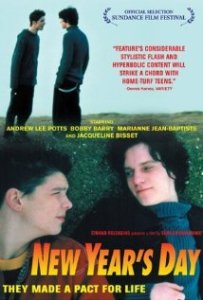 which instruments would be played, which books read. We felt that there may have to be some kind of impartial judges, for it would become a competition quite quickly – who’d done it, who hadn’t. I added a suicide pact to this cocktail, one last year to complete the list of tasks before jumping off the cliff on New Year’s Day. The dynamic of the two lead boys was taken from my personal life, one boy from a single-parent family with missing father and younger needy siblings, mentally fragile mother; one boy from a middle class 2-parent family which was more distant. So the second boy was really out of my imagination and didn’t originate either with Simon or Conrad Ryle in reality. The character of Stephen in the screenplay, and as played brilliantly by Bobby Barry in the film is insouciant, nihilistic and isolated, intelligent, lonely and destructive. He is trapped in a kind of still life after the film’s opening ten minutes, and this song for me painted his interior monologue, and the deathly stillness at the heart of the story perfectly. If you make a suicide pact with your best friend, the film explores what it is that keeps you going, what it is that makes you stop. It’s a kind of frozen moment in time – a still life.
which instruments would be played, which books read. We felt that there may have to be some kind of impartial judges, for it would become a competition quite quickly – who’d done it, who hadn’t. I added a suicide pact to this cocktail, one last year to complete the list of tasks before jumping off the cliff on New Year’s Day. The dynamic of the two lead boys was taken from my personal life, one boy from a single-parent family with missing father and younger needy siblings, mentally fragile mother; one boy from a middle class 2-parent family which was more distant. So the second boy was really out of my imagination and didn’t originate either with Simon or Conrad Ryle in reality. The character of Stephen in the screenplay, and as played brilliantly by Bobby Barry in the film is insouciant, nihilistic and isolated, intelligent, lonely and destructive. He is trapped in a kind of still life after the film’s opening ten minutes, and this song for me painted his interior monologue, and the deathly stillness at the heart of the story perfectly. If you make a suicide pact with your best friend, the film explores what it is that keeps you going, what it is that makes you stop. It’s a kind of frozen moment in time – a still life.



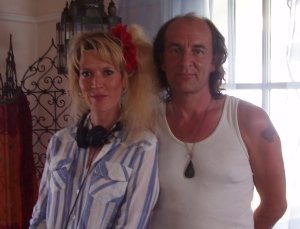 On the first morning there, Julia took me to lunch in Bude where she established that I was married with no cats. I felt that she was checking me out as future husband material as well as making friends before we worked. She is a completely unpretentious, funny, sweet and lovely lady and bright as a button. We almost all worked every day. I had extensions put into my hair for Jacques and tended to wear floppy hippyish clothes. The summer was glorious, the views spectacular, I had worked with half the crew before and we had a laugh. I will mention in particular the sound crew with Saint on the boom. Not really my world the TV comedy scene -it’s pretty competitive – but I’m terribly happy that I’ve been invited into it on a few occasions – (Him & Her, PramFace) – being funny is hard work and I love the challenge. I have total respect for Julia – I think she is one of the most original and talented people working in the UK, and I thank her for letting me be a part of Nighty Night.
On the first morning there, Julia took me to lunch in Bude where she established that I was married with no cats. I felt that she was checking me out as future husband material as well as making friends before we worked. She is a completely unpretentious, funny, sweet and lovely lady and bright as a button. We almost all worked every day. I had extensions put into my hair for Jacques and tended to wear floppy hippyish clothes. The summer was glorious, the views spectacular, I had worked with half the crew before and we had a laugh. I will mention in particular the sound crew with Saint on the boom. Not really my world the TV comedy scene -it’s pretty competitive – but I’m terribly happy that I’ve been invited into it on a few occasions – (Him & Her, PramFace) – being funny is hard work and I love the challenge. I have total respect for Julia – I think she is one of the most original and talented people working in the UK, and I thank her for letting me be a part of Nighty Night.
 He has now made (May 2015) six LPs on the bounce starting in 2003 which have individually been astoundingly good, and collectively represent the most important artist of the 21st century. Kanye comes with original ideas, smooth flows, comedy, orchestration, samples, pop, raps, and pretty much paved the way for a number of 21st century musical innovations and trends. His last LP Yeezus (2013) was monumental in its sound design and another game-changer – but this track I’ve chosen right here is a personal favourite from the second album Late Registration. Not an obvious pick, not a single, but somehow this is the one that got under our skin chez Brown/Jules. Already you can hear the music straining on the first few bars – the sound of a sound trying to escape from its boundaries, pushing against the barriers, smooth, powerful, strong and melodic. Good chords. The hook chorus is written above, rapped by old Chicago buddy Really Doe. I always thought the last line was “too low thinkin’ we local“… Rap Genius website has it as “cool out, thinkin’ we local…“. I prefer my version because of the word-play on low and local. Oh well. Kanye employed Jon Brion – multi-instrumentalist and orchestrator – to help him on this LP. Brion had produced Brad Mehldau, Fiona Apple and Rufus Wainwright and written the music for the films Magnolia, Punch-Drunk Love and Eternal Sunshine of the Spotless Mind before co-producing Late Registration in 2005. He did a splendid job.
He has now made (May 2015) six LPs on the bounce starting in 2003 which have individually been astoundingly good, and collectively represent the most important artist of the 21st century. Kanye comes with original ideas, smooth flows, comedy, orchestration, samples, pop, raps, and pretty much paved the way for a number of 21st century musical innovations and trends. His last LP Yeezus (2013) was monumental in its sound design and another game-changer – but this track I’ve chosen right here is a personal favourite from the second album Late Registration. Not an obvious pick, not a single, but somehow this is the one that got under our skin chez Brown/Jules. Already you can hear the music straining on the first few bars – the sound of a sound trying to escape from its boundaries, pushing against the barriers, smooth, powerful, strong and melodic. Good chords. The hook chorus is written above, rapped by old Chicago buddy Really Doe. I always thought the last line was “too low thinkin’ we local“… Rap Genius website has it as “cool out, thinkin’ we local…“. I prefer my version because of the word-play on low and local. Oh well. Kanye employed Jon Brion – multi-instrumentalist and orchestrator – to help him on this LP. Brion had produced Brad Mehldau, Fiona Apple and Rufus Wainwright and written the music for the films Magnolia, Punch-Drunk Love and Eternal Sunshine of the Spotless Mind before co-producing Late Registration in 2005. He did a splendid job.





 So there we were in Luxembourg in nice hotels, working with a lovely local crew (mainly) and immersed in the world of Marvin Gaye – I discovered (much like Columbus ‘discovered’ America) his 1981 LP In Our Lifetime which has some classic moments including opening song “Praise”, and I enjoyed working with Julien since we had a lot of mutual friends. I flew back to Brighton with one more day to complete – backstage at the Royal Albert Hall. We never shot it. The crew flew to Ostend and shot all of that stuff, but the London end of things was never completed, neither was the film, and nobody got paid. Another one of those stories. Julien hawked the rushes around for a couple of years, maybe still is doing so, but nothing doing. Essentially he’s trying to sell a huge debt with a possible money-spinning film behind it. Given that every film ever made is entirely a leap of faith, when one comes off the rails it is very very very hard to put it back, no matter who is involved or how sexy the project looks from the outside. Or the inside. Damn shame. A story that needs to be told as much as any I’ve ever done.
So there we were in Luxembourg in nice hotels, working with a lovely local crew (mainly) and immersed in the world of Marvin Gaye – I discovered (much like Columbus ‘discovered’ America) his 1981 LP In Our Lifetime which has some classic moments including opening song “Praise”, and I enjoyed working with Julien since we had a lot of mutual friends. I flew back to Brighton with one more day to complete – backstage at the Royal Albert Hall. We never shot it. The crew flew to Ostend and shot all of that stuff, but the London end of things was never completed, neither was the film, and nobody got paid. Another one of those stories. Julien hawked the rushes around for a couple of years, maybe still is doing so, but nothing doing. Essentially he’s trying to sell a huge debt with a possible money-spinning film behind it. Given that every film ever made is entirely a leap of faith, when one comes off the rails it is very very very hard to put it back, no matter who is involved or how sexy the project looks from the outside. Or the inside. Damn shame. A story that needs to be told as much as any I’ve ever done.


